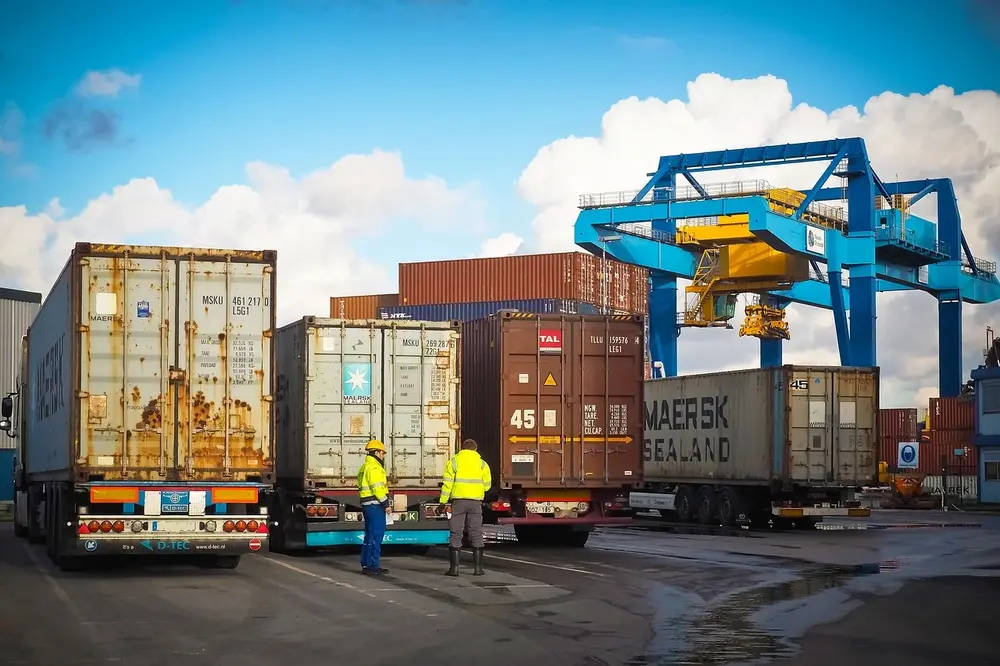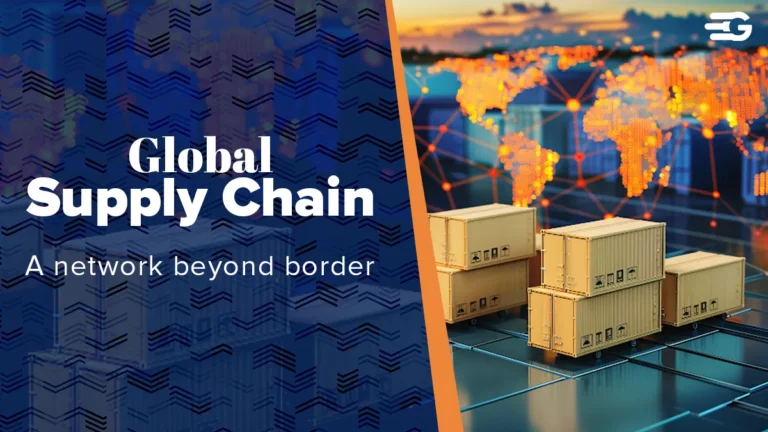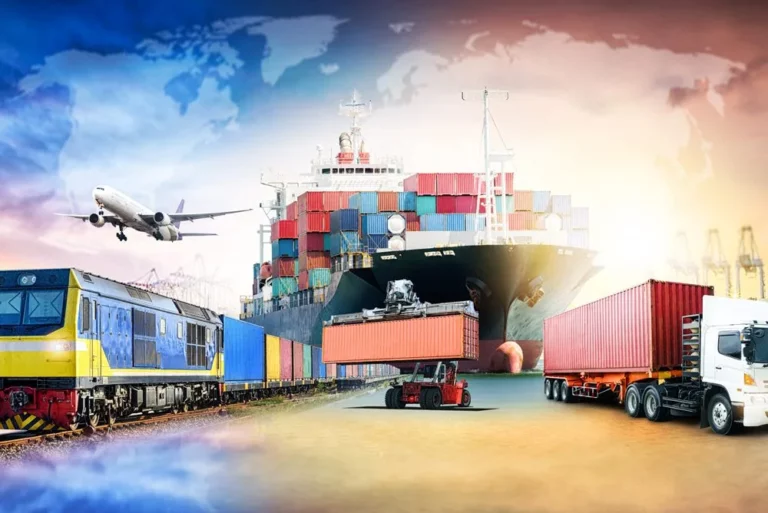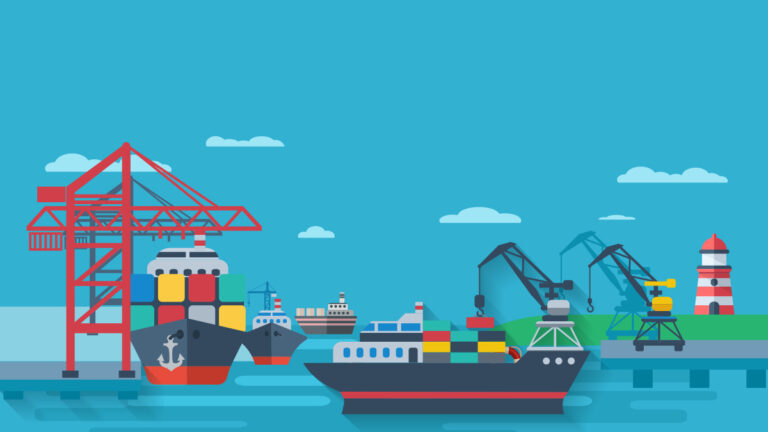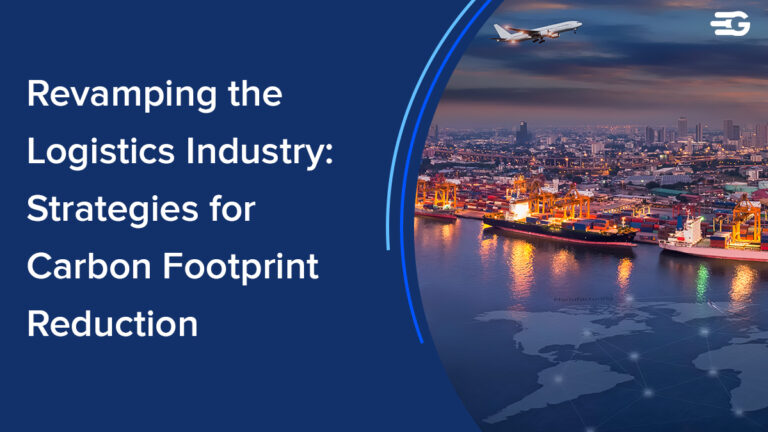Navigating Through Supply Chain Disruption for a Resilient Future
In our interconnected global economy, the smooth operation of supply chains is crucial for businesses of all sizes. This intricate web of trade relationships ensures timely delivery of goods and materials, but when disruptions strike, the impact can be profound. However, when disruptions occur within this delicate system, the ripple effects can be severe.
Supply chain disruptions have become more common due to factors like natural disasters, geopolitical tensions, and unexpected events such as the COVID-19 pandemic. These disruptions can lead to delays, increased costs, and uncertainty for businesses. To navigate these challenges, companies must take proactive steps such as diversifying their supplier base, investing in technology for greater visibility, and fostering closer collaboration with partners.
This article examines the complex nature of these disruptions, exploring the factors that contribute to them and offering practical steps businesses can take to address and mitigate these risks. By proactively building resilience into their supply chains, companies can navigate challenges and secure ongoing success in an ever-evolving global marketplace. Supply chain disruptions can arise from various unforeseen circumstances. Here are two major categories to consider:
Natural Disasters and Global Pandemics
Events like earthquakes impact the world through one domino after another. For instance, plant shutdowns, transport delays, and raw materials shortages are a few of the numerous troubles that can occur.
Take a car manufacturer for example, that uses a single chip from a specific main overseas plant, it is very likely that all its production lines will come to a sound the hitch when the same natural disaster disrupts all the production in that overseas production facility. The consequences? Customer disappointment builds up, finances shrink considerably, and the potential for promises to be broken progressively increases.
Pandemics at a global level such as COVID-19 demonstrate not only the power of unexpected events to put things out of place but also that an existence in a state of readiness is the best state of one. Open to the practice of lockdowns and border restrictions, brunt the job losses, closure of industries, and port congestion which, in turn, end up with a shortage of goods and slope in prices.
The knockdown effects were apparent in the multitude of industries that demonstrated there is more than one-string dependence on a marketplace through the use of increasingly flexible supply chains.
Market Fluctuations and Consumer Demand
An occasional change in consumer demands or economic fall could cause supply chains that were perfectly planned to break completely. Organization might become to be paralyzed due to the lack of production process development or due to their inability to manage excess inventory. On the contrary, high exposure of customers to a stay-home lifestyle during COVID-19 lockdowns seeking home office equipment could leave businesses struggling to source materials and fulfill orders, which may cause stockouts and disappointed customers.
On the other hand, that same situation may be leading to a decrease in consumer spending and to the same result which is the adjustment of the production levels and the management of excess inventories. As a result of this game where supply is the participant and demand is the spectator, the supply chains must be agile enough to cope with the changeable parameters of the market.
Real-world Impacts of Supply Chain Disruption
The consequences of supply chain disruptions are far-reaching. Let’s explore some real-world examples:
COVID-19 and Supply Chain Challenges
In the wake of the COVID-19 pandemic, the world watched as disruptions reverberated throughout global supply chains, illuminating the intricate connections that bind economies together. Lockdowns and travel restrictions acted as catalysts, triggering a series of challenges from labor shortages to factory closures and port congestion. The result? Consumers faced empty shelves and longer waits for essential goods, while businesses grappled with production slowdowns and increased costs.
This real-life saga serves as a vivid reminder of the fragility of our interconnected global market. It underscores the importance of resilience and adaptability in the face of unforeseen challenges. As we navigate the aftermath, the lessons learned will undoubtedly shape the future of supply chain management, highlighting the need for flexibility and contingency planning in an ever-changing world.
Also Read: Top Supply Chain Challenges That Require Immediate Attention
The Economic Toll of Disruptions
Disruptions can have a domino effect on the economy. Businesses face lost sales and production delays, while consumers grapple with product shortages and rising prices. Additionally, job losses can occur as companies struggle to adapt to changing circumstances. The cascading effects of a major disruption can lead to economic instability and hinder overall growth.
Building Resilience in the Face of Disruption
The key to navigating turbulent times lies in building a more resilient supply chain. Here are some effective strategies:
Leveraging Technology for Supply Chain Visibility
Despite the advantages that robust technological solutions like ERP can give to all the links in the supply chain, it is noteworthy to establish an effective and reliable mechanism for monitoring and detecting those who violate rules and regulations in the supply chain. With real-time data, forecasting gets better, though more timely and accurate inventory reports can be done, which would enable better risk-overcoming.
In addition to leveraging ERP systems for enhanced supply chain management, businesses must also prioritize the implementation of effective compliance monitoring mechanisms. Real-time data provided by these systems not only improves forecasting and inventory management but also facilitates early detection of potential violations of rules and regulations within the supply chain.
By integrating the latest control tower technologies, companies can gain comprehensive insights into their supply chain processes, enabling them to monitor inventory levels, transportation plans, and production issues seamlessly. This holistic approach to supply chain visibility not only enhances operational efficiency but also mitigates risks and ensures compliance with regulatory standards, ultimately fostering resilience and sustainability in the global marketplace.
Along with the ERP systems, the application of the latest control towers should be investigated, which can give a general insight into the supply chain processes. Such tools can connect data from a few sources together in a way that allows for the instantaneous monitoring of inventory levels, transport and haulage plans, and potential production issues.
Diversification of Suppliers and Routes
The existence of just one supplier or transportation route within your business makes you highly liable to disruptions. Exploring more suppliers and alternative shipping routes will help you to diversify and still be able to run your business even during difficulties. For example, a firm with all its suppliers in an area that is frequently subjected to disasters can do away with this risk by partnering with suppliers from other more stable parts of the world.
Consequently, procuring multiple modes of transportation can prevent firms from being subject to port congestions or weather-related disturbances. Researching the effectiveness of shipping solutions like air freight or rail may offer better flexibility and significantly fewer risks when unanticipated events happen.
By leveraging GoComet’s services, businesses can implement the advice of diversifying suppliers and transportation routes to mitigate risks. GoComet facilitates connecting with suppliers from stable regions, reducing dependency on disaster-prone areas. Additionally, it offers insights into alternative shipping modes like air freight or rail, providing flexibility and resilience against disruptions. In essence, GoComet empowers businesses to proactively address supply chain vulnerabilities, ensuring continuity in operations during unforeseen events.
Actionable Strategies for Supply Chain Recovery
Being prepared for disruptions is crucial. Here’s how to bounce back quickly:
Developing a Responsive Plan
A flexible and responsive action plan allows you to react swiftly to disruptions. Utilizing software for supply chain planning can enhance this flexibility by providing real-time data and predictive analytics, enabling proactive adjustments. The plan should outline protocols for sourcing alternative materials, adapting production processes, and communicating effectively with stakeholders. Regularly reviewing and updating this living document ensures it reflects current business needs and potential threats. Consider conducting regular disruption simulations to test your plan and identify areas for improvement.
Collaboration Across the Supply Chain
Open communication and collaboration among all supply chain partners are essential. Sharing information, anticipating challenges, and working together to find solutions will lead to faster and more effective recovery. Imagine a scenario where a shipment is delayed due to unforeseen circumstances at the port.
By openly communicating with all stakeholders involved, from suppliers to logistics providers, potential solutions can be identified and implemented collaboratively to minimize disruptions. Building strong relationships with your supply chain partners fosters trust and transparency, allowing for quicker responses to disruptions.
Future Trends in Supply Chain Management
The future of supply chain management is brimming with exciting possibilities:
The Role of AI and Machine Learning
Artificial intelligence (AI) and machine learning (ML) are poised to revolutionize supply chain management by enabling:
More Accurate Forecasting: AI can analyze vast amounts of data, including historical sales trends, market conditions, and social media sentiment, to predict demand with greater accuracy. This allows businesses to optimize production planning, inventory levels, and resource allocation, reducing the risk of stockouts or overstocking.
Optimized Logistics Routes: Machine learning algorithms can analyze real-time traffic data, weather patterns, and fuel costs to identify the most efficient transportation routes. This can significantly reduce delivery times and transportation costs.
Predictive Maintenance: AI can monitor sensor data from equipment within warehouses and factories to predict potential breakdowns before they occur. This proactive approach can minimize downtime, improve operational efficiency, and extend the lifespan of equipment.
Emphasizing Sustainability and Ethics
Consumers and businesses alike are placing greater emphasis on sustainability and ethical practices throughout the supply chain. This trend will influence sourcing strategies, packaging materials, and overall operations:
Sustainable Sourcing: Businesses will increasingly seek out suppliers who prioritize eco-friendly practices, such as using recycled materials and reducing their carbon footprint. This shift will require greater transparency within the supply chain, allowing businesses to trace the origin of materials and ensure sustainable practices are followed throughout the production process.
Ethical Labor Practices: Consumers are demanding greater visibility into labor practices within the supply chain. Businesses will need to ensure fair wages, safe working conditions, and adherence to ethical labor standards throughout their supplier network.
Sustainable Packaging: Reducing waste and using eco-friendly packaging materials will become a priority. This could involve using recycled cardboard, biodegradable materials, and minimal packaging overall. By implementing sustainable practices, businesses can not only reduce their environmental impact but also appeal to environmentally conscious consumers.
Conclusion
Supply chain disruptions are inevitable in a complex global economy, but with the right strategies, you can build resilience and adapt effectively. Implementing the approaches discussed will help you manage challenges and position your business for sustained success.
Keep refining your supply chain practices by staying informed about industry developments and leveraging new technologies. Embrace AI for better forecasting, use machine learning to enhance efficiency, and adopt sustainable practices to gain a competitive edge.
By focusing on these areas, you can turn potential disruptions into opportunities for growth and ensure your supply chain remains robust and future-ready.
